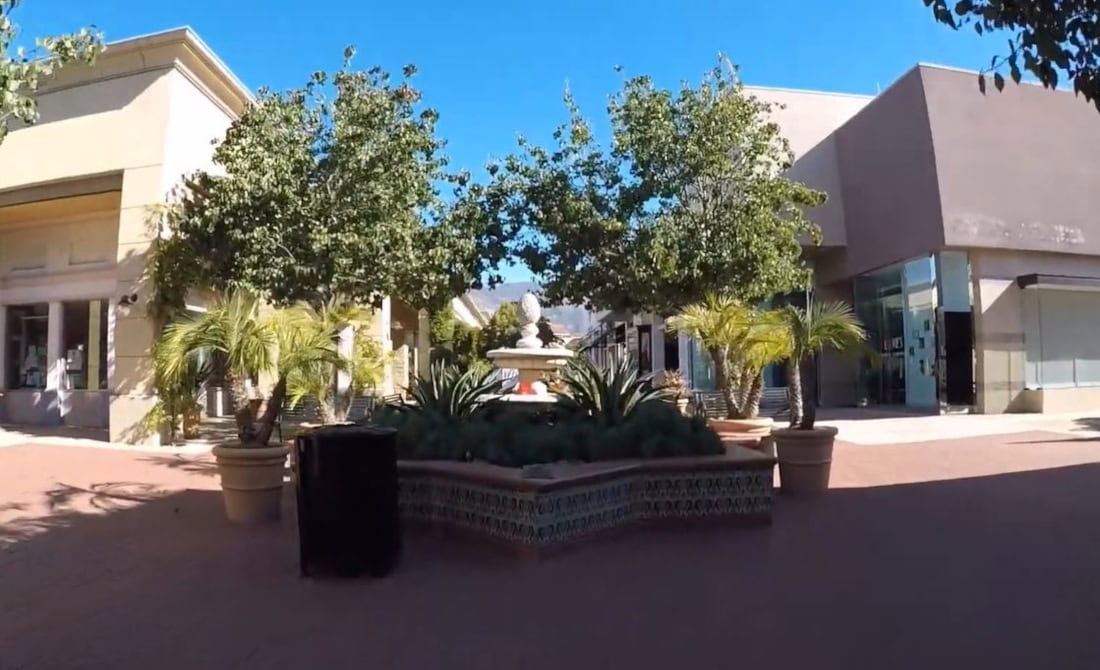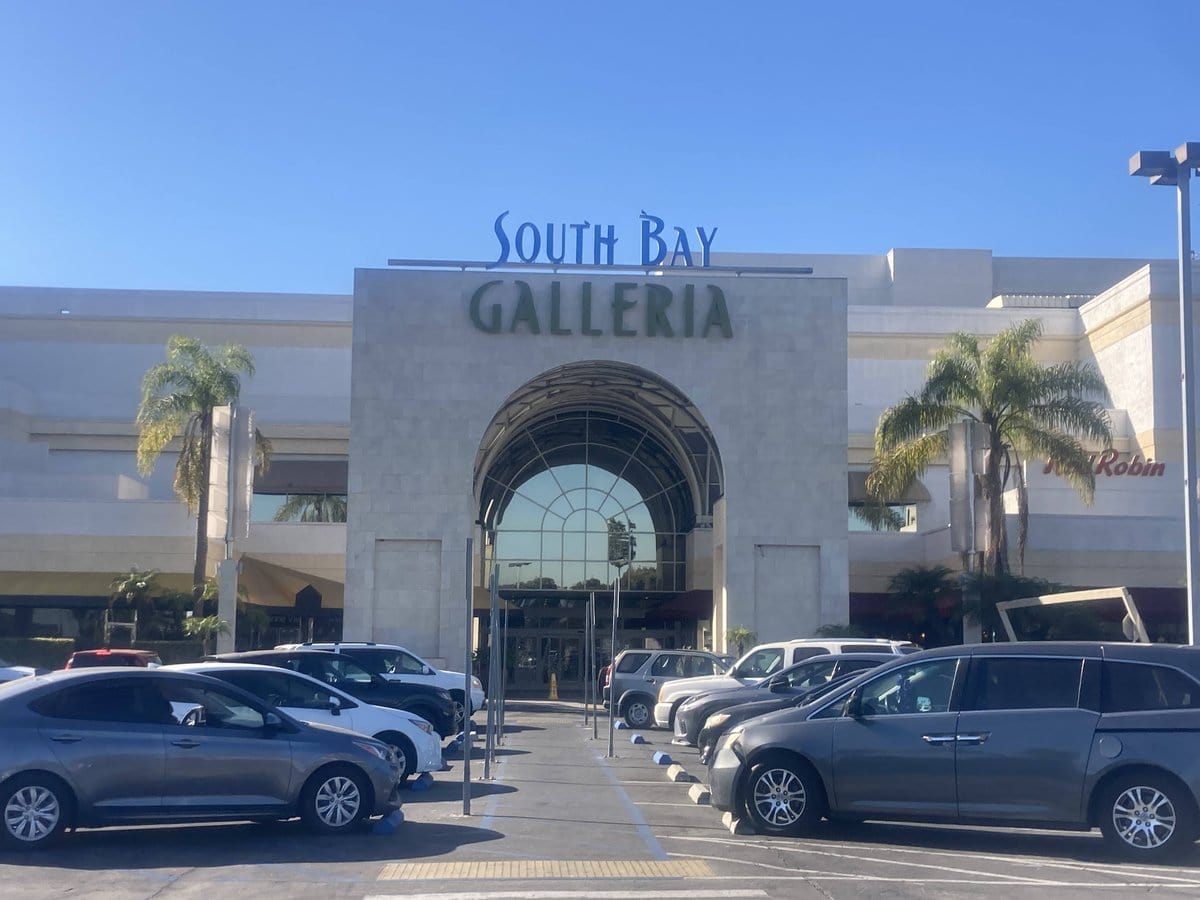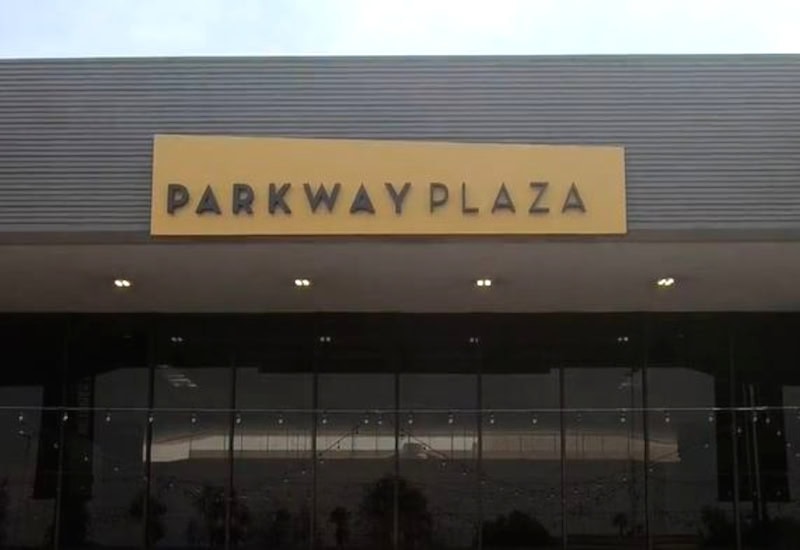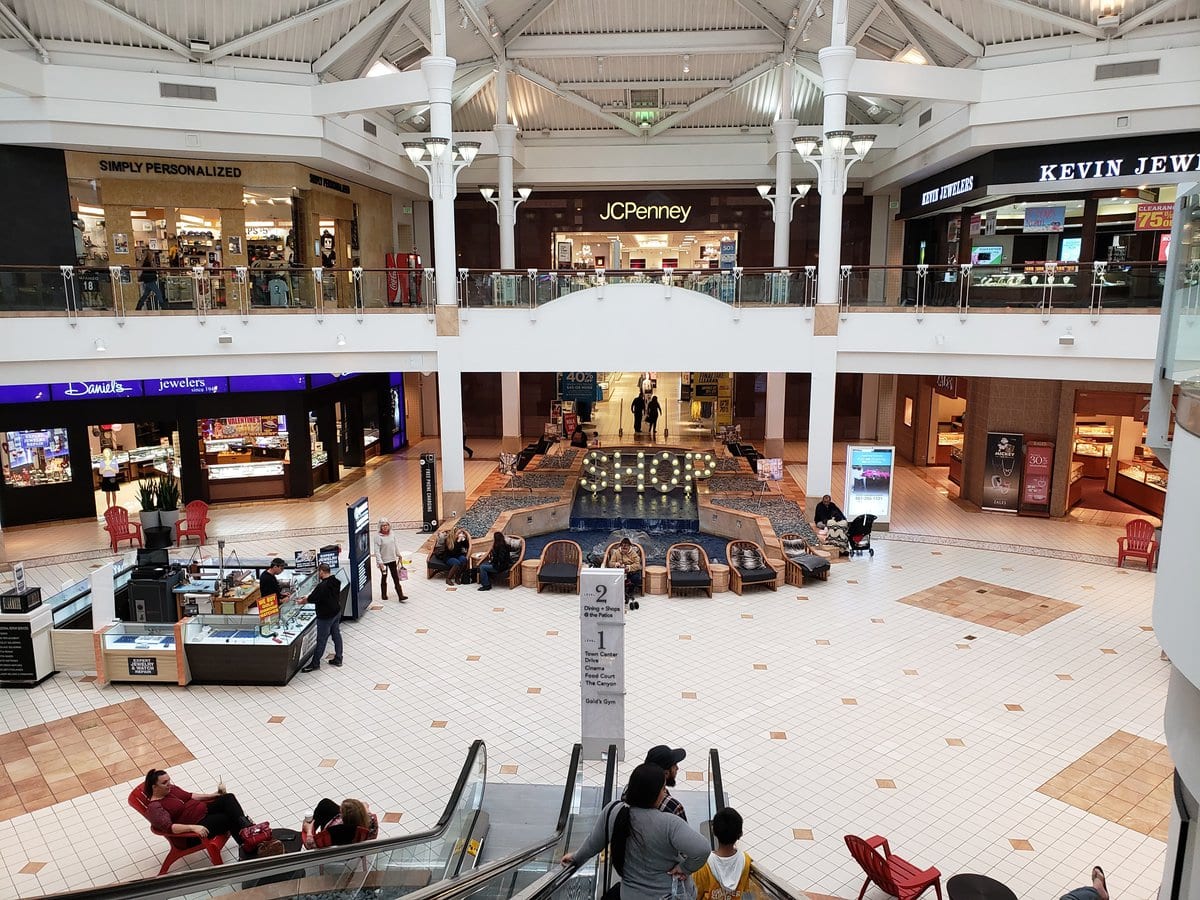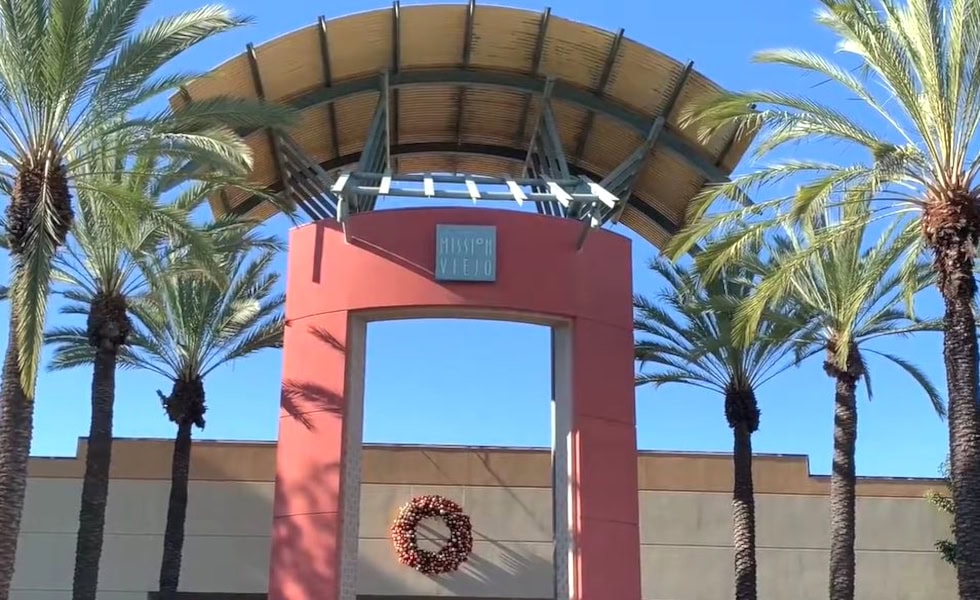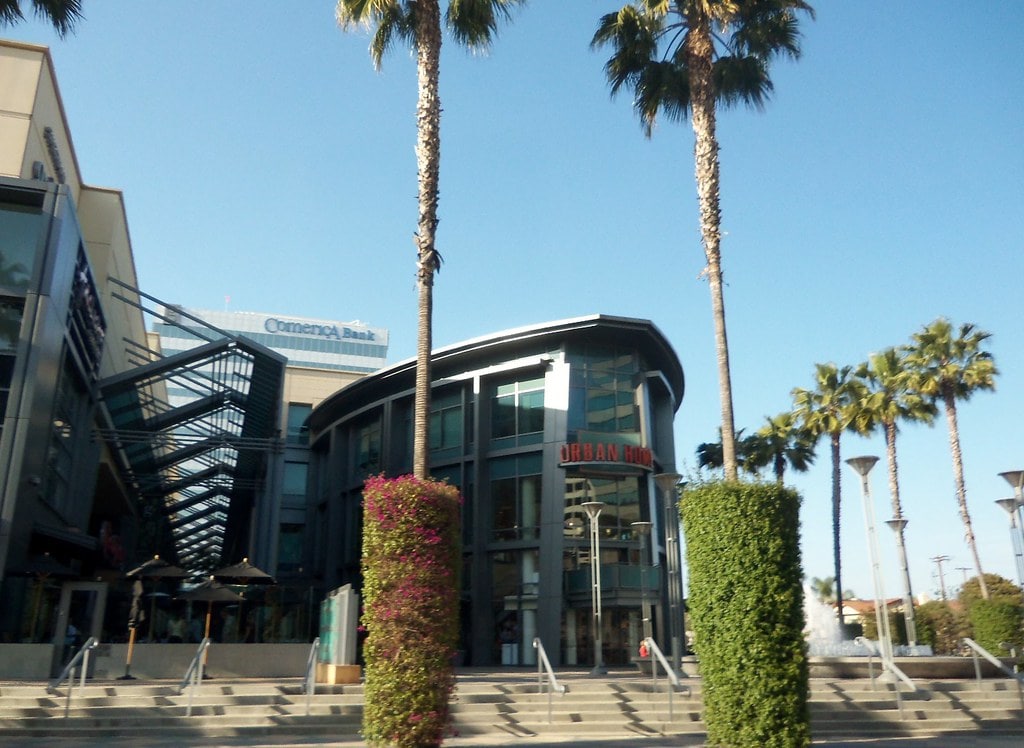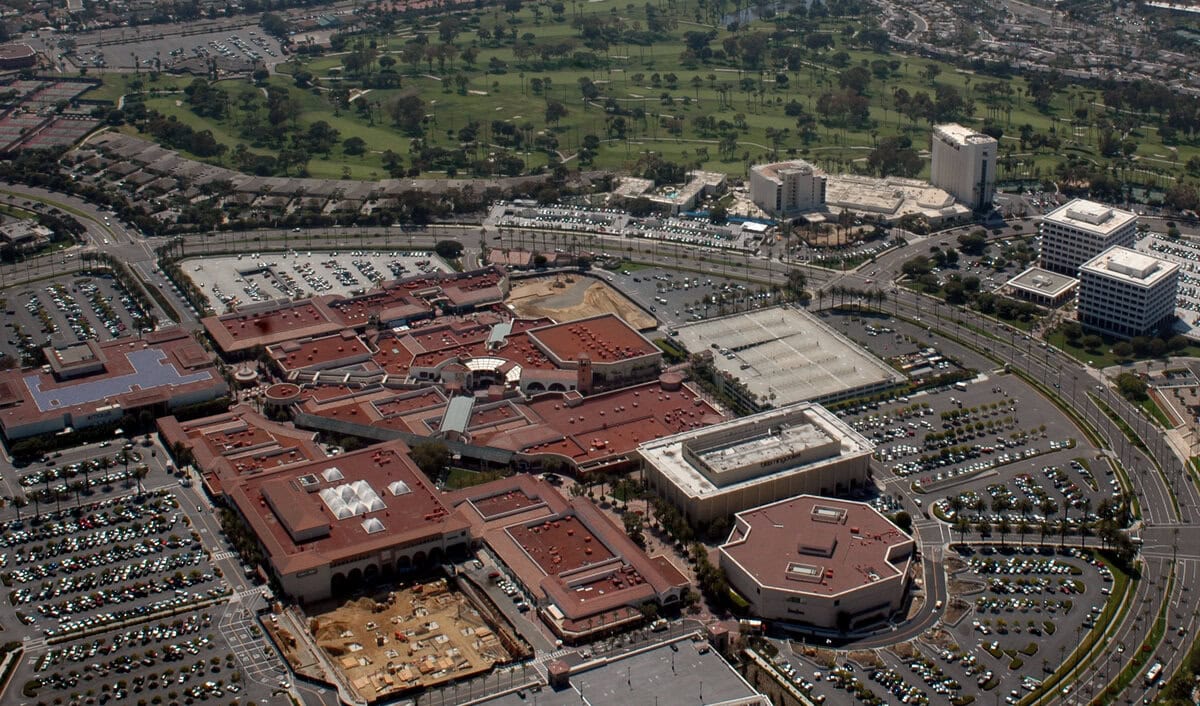Valencia Town Center: a delayed arrival
Before Valencia Town Center existed as marble, skylights, and food courts, it lived as a diagram.
In 1965, Newhall Land and Farming Company penciled a regional shopping center into its master plan for the new community of Valencia, blithely assuming it would be warranted within about five years.
The valley did what it was supposed to do: it grew. The mall did not. For decades, residents drove over the hill to Northridge Fashion Center or Glendale Galleria to do the kind of shopping their own plan had promised at home.
The official pivot came in May 1988. Newhall Land announced the first true regional mall for the Santa Clarita Valley: a projected 180 million dollar development on roughly 80 acres near the civic center, on the east side of McBean Parkway between Magic Mountain Parkway and Valencia Boulevard.
The vision was meticulous: a two-level, enclosed, 1.5 million square foot complex with six department stores and 100 specialty shops.
Construction was supposed to begin in 1990, with a first phase of up to 800,000 square feet and two or three anchors opening by 1991 or 1992.
To execute it, Newhall Land brought in Cincinnati-based JMB Federated Realty Associates and May Centers, the mall arm of May Department Stores.
About a year before opening, design consultants sat down with the Santa Clarita Valley Historical Society, hunting for a local story to wrap around all that concrete.
They landed on vintage orange crate labels from along the Santa Clara River corridor and even commissioned an original Valencia Town Center label, centerpiece of a pre-opening "Count On It!" collector album.
Nearly three decades after the first sketch, the promised town center finally had a calendar.
Skylights, protests, and the circus horse
Valencia Town Center opened on September 24, 1992, just as malls in America were becoming less popular.
Across the country, building new shopping centers had dropped by about 70 percent in three years. In 1992, only about 460 centers opened, compared to 1,510 in 1989.
The developer in Santa Clarita believed that a fast-growing valley, tired of driving 20 or 30 miles to other malls, would want one of its own even as the rest of the country was building fewer.
The finished mall was smaller and cheaper than it was first planned. About 150 million dollars was spent to build 790,000 square feet on 65 acres, with a style based on Spanish Mediterranean buildings.
Inside were three main stores: May Company, JCPenney, and Sears, plus 110 shops, though only 76 of them actually opened on the first day.
There was also a ten-screen movie theater and a food court. Two more restaurants were planned.
Inside, the mall was meant to impress: hallways with skylights and marble floors, fountains, tall palm trees, murals showing the valley's history, and signs that looked like old orange crate labels.
There was a special carousel made to remember the 1930s and 1940s, when Clyde Beatty's circus spent winters in the area. Some of the carousel animals were copies of horses from that time.
Outside, the opening was less sentimental.
About 150 people supporting workers held a protest, chanting "Newhall Land shut us out" and "Tom Lee took our jobs," aimed at Newhall Land's chairman, Thomas L. Lee, and a yearlong fight over construction jobs.
The company answered with its own numbers, saying that 86 percent of contractors and 96 percent of construction workers were from California, mostly from Greater Los Angeles, the San Fernando Valley, and Santa Clarita.
From the start, the mall was both a community gathering place and a spot for people to share their complaints.

Orange crate dreams and early boom years
The orange crate theme was more than just decoration. Oranges weren't grown in Valencia; the fields here grew carrots, onions, and other vegetables.
But the labels were bright, and their idea of California fit the sales message.
Hallways were lined with palm trees and murals that showed the valley's farming past in bright colors, while signs used the lettering and pictures from old crate designs.
The special Valencia Town Center label turned memories of the past into a way to keep customers coming back.
Shoppers showed up just as Newhall Land had hoped. By the mall's first birthday on September 24, 1993, its 790,000 square feet and 110 stores had become a regular part of life in Santa Clarita.
In the last three months of 1992, the new center brought in 320,000 dollars in sales tax for the young city.
The first three months of 1993 brought in 161,000 dollars, which was lower because the holiday rush was over and the excitement had worn off, not because of any real problems.
City officials had expected about one million dollars a year, and the mall quickly became their biggest source of money.
About 2,000 jobs were created, and about 90 percent went to people who lived nearby.
A study paid for by Newhall Land estimated that 350,000 people could shop at the mall, not just from the Santa Clarita Valley but also from parts of the San Fernando and Antelope valleys and Ventura County.
For an area that was told in 1965 that a big shopping center would be needed "in about five years," the 1992 opening, about 25 years late, was both something new and a promise finally kept.

Westfield, Patios, and lifestyle reinvention
By the early 2000s, Valencia Town Center was no longer just a local place and became part of a group of shopping centers around the world.
In 2002, Westfield Group bought a quarter of the property, bought another quarter in 2005, and took over running the mall, changing its name to Westfield Valencia Town Center.
The main stores changed to match national trends: on September 9, 2006, the Robinsons-May sign came down and Macy's went up, as part of a bigger change in department store brands.
JCPenney and Sears stayed; H&M and Gold's Gym came in as new main stores, showing that quick-changing fashion and fitness were now important for people living in the suburbs.
Westfield's biggest change happened in the parking lot.
In July 2007, Santa Clarita's Planning Commission approved a large outdoor addition on part of the parking area, sometimes called The Patios or The Shops at The Patios.
The plan let Macy's get 50,000 square feet bigger and moved the mall's western side closer to the Red Robin restaurant.
Two parking garages were approved, and alcohol permits made it possible for up to ten restaurants to open; early talks mentioned P.F. Chang's, California Pizza Kitchen, and The Cheesecake Factory as possible choices.
The Patios opened in two parts, on November 18, 2009, and November 11, 2010.
Spending $130 million created about 40 new outdoor shops selling clothes, home goods, and kitchen items under names like BCBG Max Azria, Bobby Chan, Chico's, J. David's Custom Clothiers, Michael Kors, Sephora, Soma, Swarovski, True Religion, White House Black Market, and Williams-Sonoma.
Dining came next: coffeehouse, wine bar, bakery, and full-service restaurants, including Wokcano, a Japanese sushi bar and steakhouse with outdoor seating.
The area focused on gardens, porches, fountains, koi ponds, natural stone, and stylish seating, mixing "modern fashion" with a carefully chosen old-fashioned feel.
Empty anchors, uneasy safety, and doubt
The slow decline of department stores finally reached Valencia Town Center in March 2018, when Sears, one of the first big stores, closed and left a huge empty space at the edge of the mall.
In 2019, Westfield suggested a plan called The Patios Connection, which would turn the old Sears spot into a fancy movie theater, a gym, a Costco with a 275-space parking lot on the roof, and a gas station.
After COVID-19 made money tight and pushed more people to shop online, that plan was canceled in 2021.
By 2023, the mall still seemed impressive on paper. It had about 1.1 million square feet of space to rent, with over 170 shops and restaurants spread over about 65 acres, and 4,300 parking spots.
More than 100,000 people lived within five miles, with an average household income between $123k–$154k and easy access from the I-5 and CA-126 highways.
Safety concerns added to the worries about the anchor stores. On January 11, 2023, a call about someone trespassing at Macy's ended when a Los Angeles County sheriff's deputy fatally shot a man outside the store.
In March 2025, the state Department of Justice said it would not file criminal charges, saying there was not enough evidence but calling for better rules to calm situations and more training for mental health emergencies.
By 2025, the Forever 21 that had been another main store had closed, leaving its space empty next to the old Sears. The mall was still busy and important, but now had empty spots around the edges.
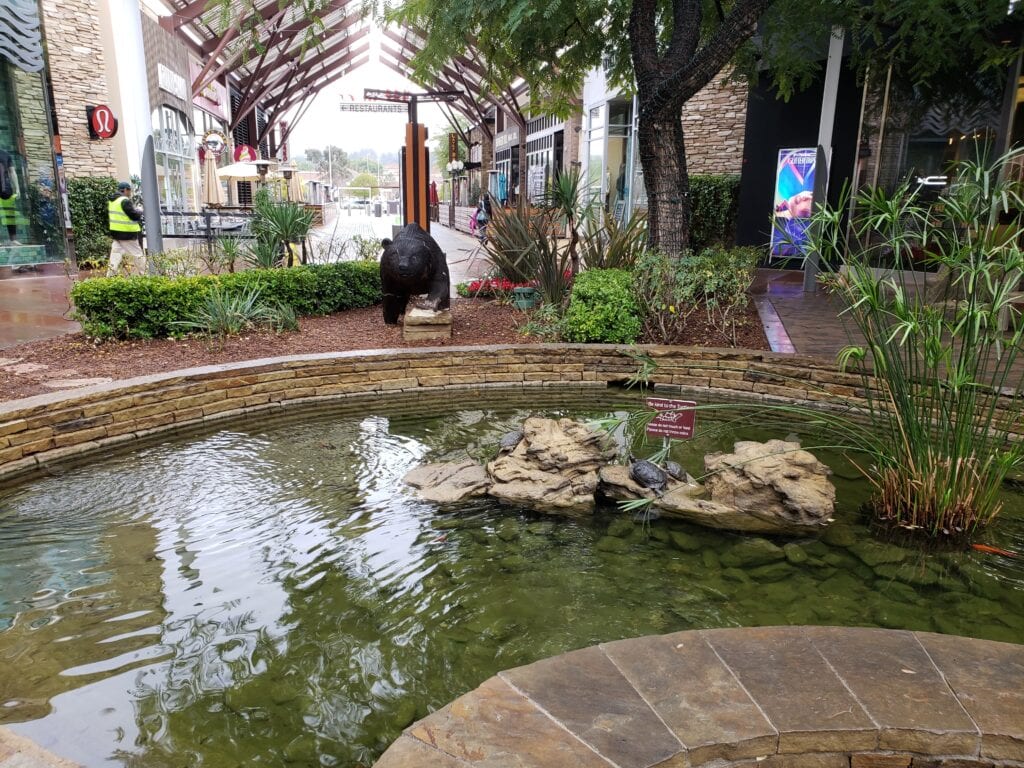
Specific Plan futures in dispute over parking
Ownership changed hands again just as people started asking more questions about what the mall should be.
On September 1, 2023, after the previous owner failed to pay its mortgage, Dallas-based Centennial Real Estate bought Valencia Town Center for about 199 million dollars.
The mall was about 87 percent full, and the new owners dropped the Westfield name.
Centennial described the site as a future place where people could live, work, and have fun, and mentioned its work on the Hawthorn and Fox Valley malls near Chicago as rough examples.
Santa Clarita had already started looking at the bigger picture. Since 2022, the city had been putting together a Town Center Specific Plan for about 111 acres that includes the mall, City Hall, and nearby blocks.
In January 2024, officials said the plan was meant to keep one of the city's main sources of money from slowing down and to balance new homes with businesses.
By April, planners were openly comparing the project to Irvine Spectrum: a newer area where the roughly 1 million square foot indoor mall would be surrounded by up to 2,200 homes, about 440 of them lower-cost, plus a hotel and convention center.
Parts of the food court, the JCPenney store, and the old Sears space were mentioned as possible buildings to tear down.
A letter to the city described a first phase: a Costco with a gas station, a Dick's Sporting Goods with a nearby play field, sit-down restaurants Il Fornaio and Capital Grille, about 300 homes for seniors, and a 70-room hotel, all connected to a parking garage with space for 1,500 cars.
Centennial asked Santa Clarita to pay between 60 and 75 million dollars for that parking garage, arguing that putting a walkable area with homes and shops together with a big warehouse store made the parking garage much more expensive than usual.
In January 2025, early renderings offered residents a first look at the envisioned phase even as the funding question stayed open.
For now, Valencia Town Center is in an in-between state. On weekends, teenagers still wander between Apple and Chick-fil-A, and families still line up under the skylights.
On weeknights, planners and council members argue over how much space buildings can take up, how many homes there should be, and how much it costs to build concrete ramps.
The mall that started as an idea in a 1965 plan has become the place where Santa Clarita decides what kind of "town center" it really wants to become.

